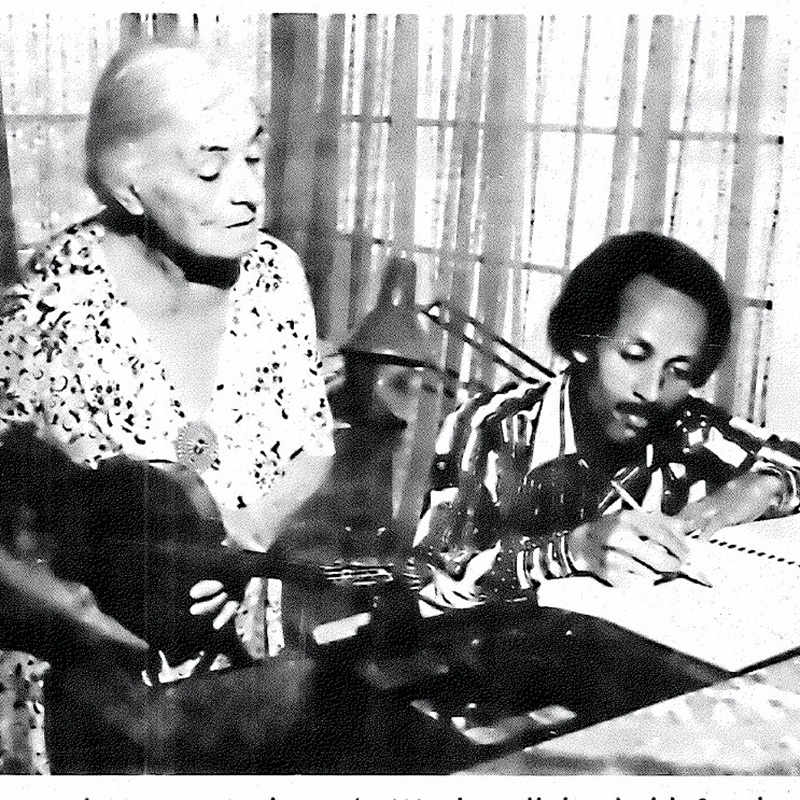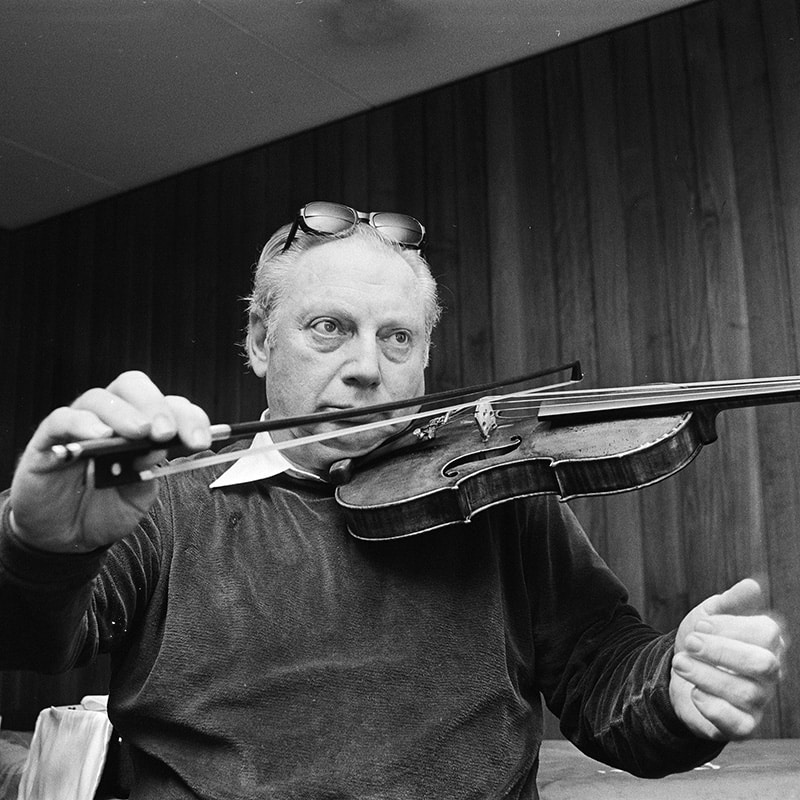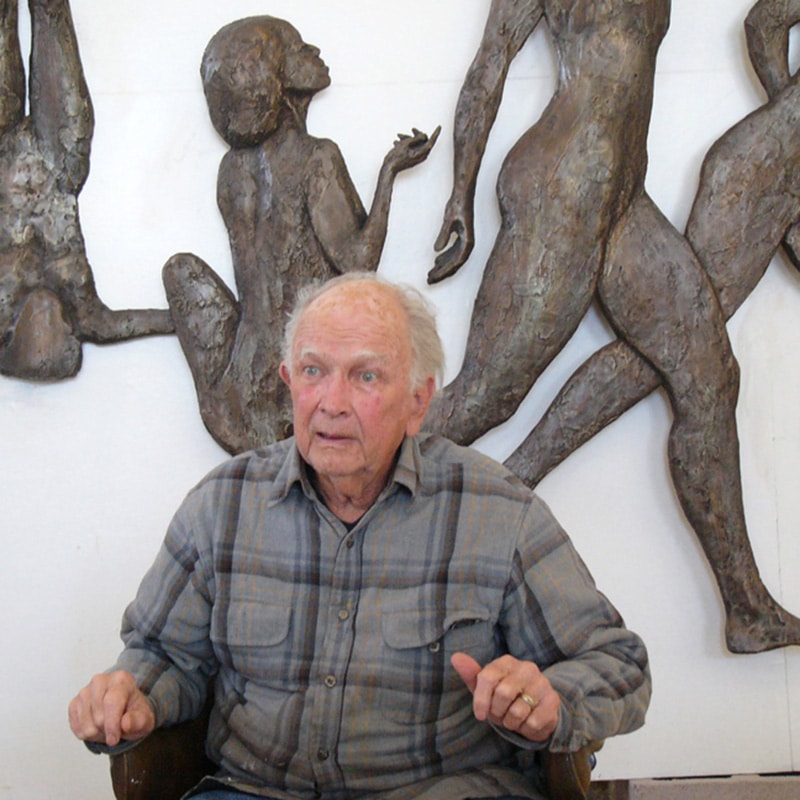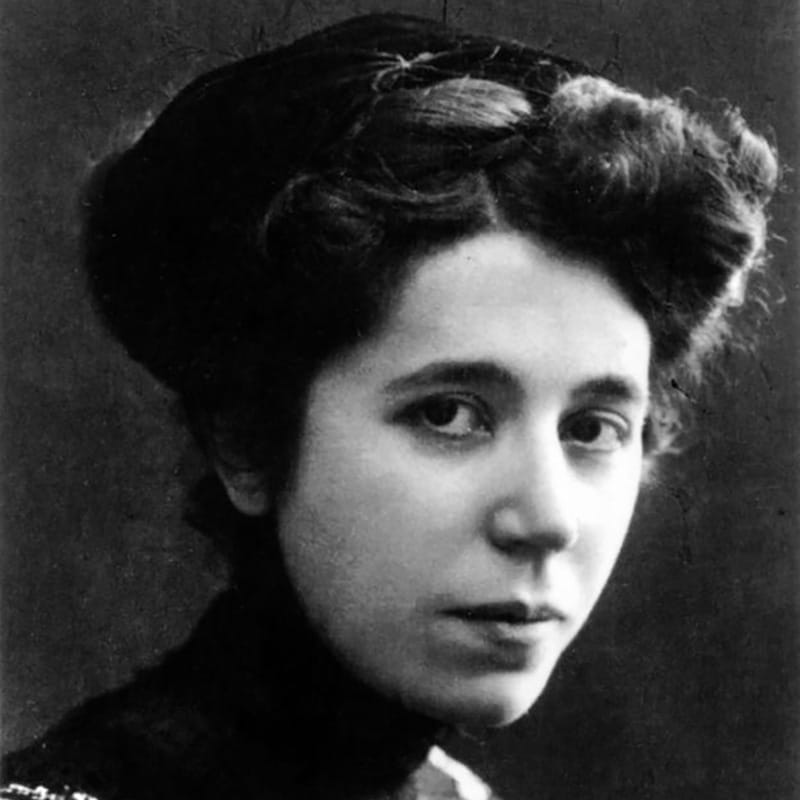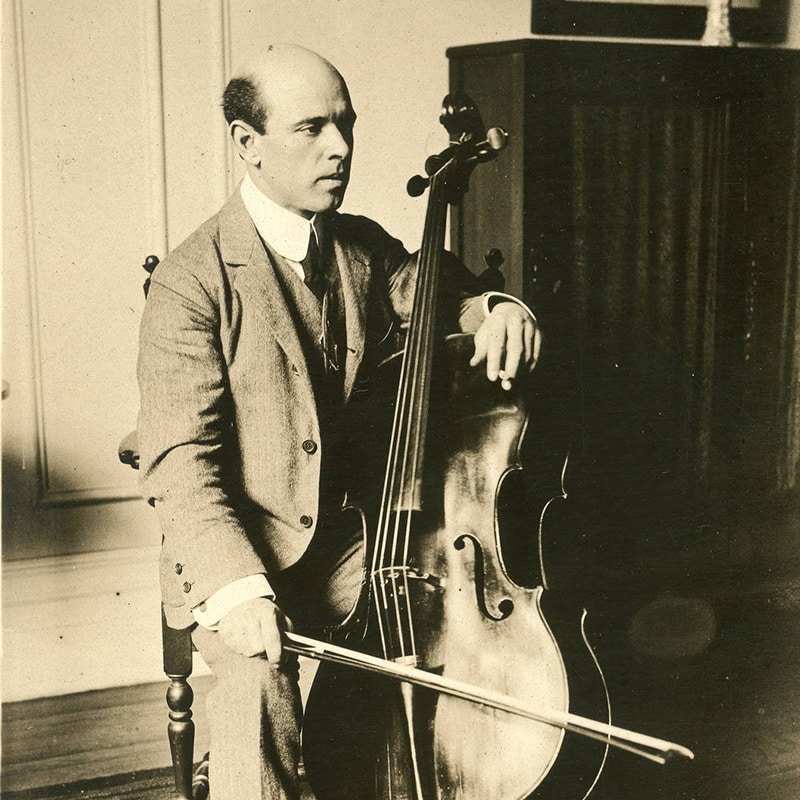
Our History
Facing East, inspired by the Hopi ceremonies into which she was welcomed, the adobe home of Louise Lincoln Kerr was built on 47 acres of pristine desert and citrus groves at the northernmost edge of a small Western town known as Scottsdale. Built of handmade bricks made from the earth of the property, the Kerr home has been a picturesque destination for artists to visit since the ‘40s and ‘50s. Now known as ASU Kerr, we continue the pioneering spirit of our roots – bringing musicians and audiences together, to relax in this eclectic, funky space and enjoy unexpected experiences.

ASU Kerr is on the National Register of Historic Places
ASU Kerr was welcomed onto the National Register of Historic Places on April 14, 2010. The historic designation includes Louise Lincoln Kerr’s adobe former home, built in 1948, and “The Studio,” constructed in 1959. The buildings are a significant and rare example of Spanish Colonial style adobe architecture in Scottsdale. The property is also listed in the State Register of Historic Places and the City of Scottsdale Register of Historic Places, prerequisites for earning a national historic designation.
Louise donated her home and studio to ASU just before her death, with the request that it remain in use as a performance venue. It has remained a haven for artists over 60 years.
ASU Kerr Fun Facts
Built in 1948
by Louise Lincoln Kerr, the adobe house was situated on 47 acres of pristine Scottsdale desert and lush orange groves.
Edge of Scottsdale
The Kerr house marked the northernmost edge of Scottsdale, in what was known as “The West’s Most Western Town.”
Sugar Pine Doors
There are 11 hand-carved Sierra Nevada sugar pine doors throughout Kerr, each with a unique pattern and design.
Local Adobe
Mexican artisans used mud directly dug on the property grounds to create the adobe bricks for the house construction.
544 Bottles of Beer
flank the frame of the main door of the studio, all drunk by the workers who built the house.
Colonial Tile
The Spanish colonial tile in Louise’s former home is made of white marble dust and cement. It is extremely rare and valuable.
The Shacks
The original property had six guest houses, known as “The Shacks,” for visiting artists and musicians to stay, relax and create.
John C. Lincoln
Kerr’s closest major cross street, Lincoln Boulevard is named in honor of Louise’s dad, John C. Lincoln, an engineer and inventor who developed land and several successful businesses in the Valley and throughout Arizona.
Desert Critters
Desert creatures including snakes, bats, quail and rabbits have made special surprise appearances in the studio.
Rising Sun
The main entrance to the studio faces east, where the sun rises, in honor of Hopi and other Native American traditions.
John Henry Waddell
Famed Arizona sculptor John Henry Waddell befriended Louise and lived on her property in the Verde Valley.
Sculpture Study
Waddell’s relief sculpture displayed in the studio is a small scale “study” version of his famed “Earth & Space” dancing figures located outside Phoenix Herberger Theater.
Artists of Kerr
Louise Fun Facts
Daughter of John C. Lincoln
Louise Lincoln Kerr was the eldest daughter of the visionary family led by John C. Lincoln, who helped establish such landmarks as Camelback Inn and John C. Lincoln Hospital.
A Brilliant Violinist
Louise, before switching to viola, was a brilliant violinist who studied under the famed Russian composers Igor Stravinsky and Sergei Prokofiev.
Cleveland Municipal Orchestra
Louise was one of the first two women invited to join the Cleveland Municipal Orchestra in 1913. At 20 years of age, she was one of the youngest members of the orchestra.
A Prolific Composer
Louise composed over 100 works ranging from solos to full orchestral pieces.
A Pioneer in Ethnomusicology
Studying the cultural and social aspects of music, Louise was granted unprecedented access into the kivas of the Hopi in Northeastern Arizona, where she researched their sacred rites, traditional songs and stringed instruments.
“Enchanted Mesa”
Louise’s orchestral piece, “Enchanted Mesa,” honors her friendship with the Hopi people and incorporates Hopi legends, musical traditions, instruments and sounds.
Recording Industry
In the 1920s, Louise was at the forefront of the recording industry proofing piano rolls and working in the sound booth for the Aeolian Recording Company of New York.
A Local Nickname
In the 1940s and 1950s, Louise was nicknamed “Arizona’s Grand Lady of Music” by the people that knew her.
Phoenix Symphony
Louise was one of the first female composers to have her work performed by the Phoenix Symphony, premiering her piece “Enchanted Mesa” in 1955.
Herberger Sculptures
Louise created music for a ballet that went with the Herberger dancing sculptures. It was performed and premiered with the unveiling of the statues on the Verde Valley property she shared with Waddell before the works were moved to Phoenix.

